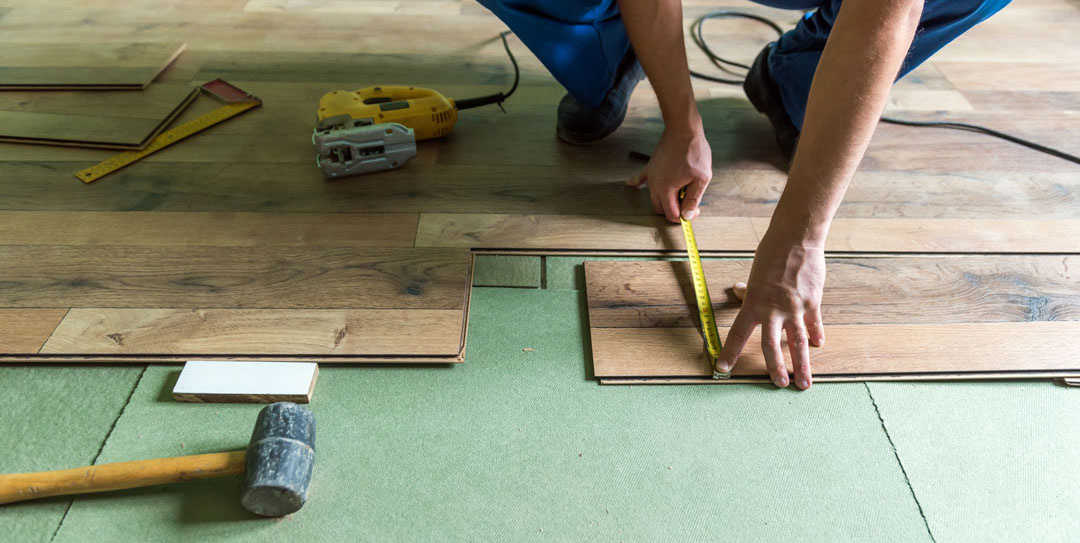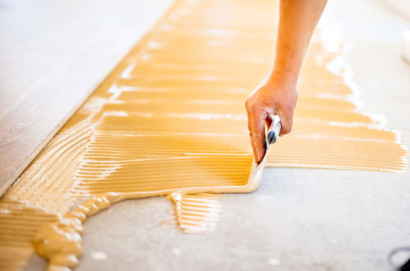Vinyl flooring is a 100-percent synthetic material. In standard sheet vinyl and vinyl tiles, the base layer is usually fiberglass, which is then coated in PVC vinyl and a plasticizer. The resulting sheet is printed and embossed with a surface print layer. Over this, multiple wear layers are applied, along with a layer of no-wax polyurethane. With vinyl plank flooring, the core layer is a thicker, multi-layer PVC vinyl. Luxury vinyl flooring comes in planks or tiles that fit side-to-side to form a floating floor. The overall thickness for vinyl flooring ranges from 1.5 mm for sheet vinyl to 5 mm for luxury vinyl planks.
Laminate flooring is similar to luxury vinyl planks in its look and method of installation. But the critical difference is that its core is made from wood byproducts bonded with resins. The top surface is a hard, transparent plastic wear layer that covers the printed design layer. The overall thickness for laminate flooring planks ranges from 6 mm to 12 mm.
The ability of each flooring to effectively stand up against moisture hinges on its materials. Moisture resistance dictates selective areas where laminate flooring may or may not be installed. By contrast, vinyl flooring may be installed anywhere within the home.
| Recommended Installation Areas | ||
|---|---|---|
| Laminate Floor | Vinyl Floor | |
| Bathroom, Full or Partial | No | Yes |
| Powder Room | Maybe | Yes |
| Kitchen | Maybe | Yes |
| Dining Room | Yes | Yes |
| Living Room | Yes | Yes |
| Bedroom | Yes | Yes |
| Home Office | Yes | Yes |
| Mudroom | No | Yes |
Source: https://www.thespruce.com/vinyl-vs-laminate-flooring-1822800






